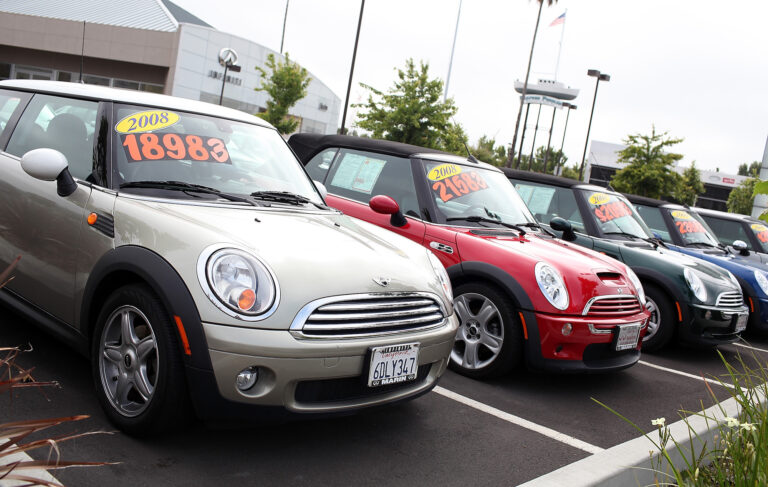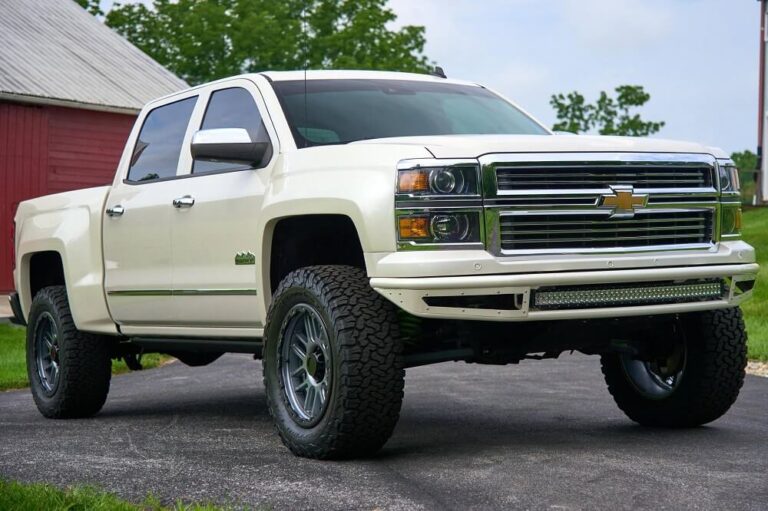Chinese Car Brands In The Philippines: Reshaping the Automotive Landscape
Chinese Car Brands In The Philippines: Reshaping the Automotive Landscape cars.truckstrend.com
The Philippine automotive market, once dominated by established Japanese, Korean, and American brands, is undergoing a significant transformation. At the forefront of this shift is the burgeoning presence and remarkable growth of Chinese car brands. What was once viewed with skepticism is now a rapidly expanding segment, offering Filipino consumers a compelling blend of affordability, advanced features, and increasingly, improved quality and reliability. This comprehensive guide delves into the phenomenon of Chinese car brands in the Philippines, exploring their journey, impact, and what potential buyers need to know.
The Rise of the Dragon: A Brief History and Evolution
Chinese Car Brands In The Philippines: Reshaping the Automotive Landscape
The entry of Chinese car brands into the Philippines wasn’t an overnight success. Early attempts in the 2000s were met with resistance, largely due to lingering perceptions of questionable build quality, lack of after-sales support, and unproven reliability. Brands like Chery and JAC made initial inroads but struggled to gain widespread trust against well-entrenched competitors.
However, the landscape began to change dramatically in the late 2010s. Chinese automotive manufacturers invested heavily in research and development, refined their manufacturing processes, and forged strategic partnerships with global automotive giants (e.g., Geely’s ownership of Volvo, SAIC’s partnership with General Motors). This led to a significant leap in design, engineering, safety standards, and technology. Coupled with aggressive pricing strategies and a commitment to building robust dealership networks and after-sales services, Chinese brands started to chip away at market share. The past few years have seen an undeniable surge, with these brands now representing a substantial and growing portion of new vehicle sales in the country.
Key Players: Dominant Chinese Car Brands in the Philippines
Today, the Philippine market boasts a diverse array of Chinese automotive brands, each carving out its niche. Here are some of the most prominent ones:
- Geely: Arguably the most successful Chinese brand in recent years, Geely has shattered old stereotypes. With a strong emphasis on modern design, advanced technology, and competitive pricing, models like the Coolray (a subcompact crossover) and the Azkarra (a compact SUV) have become bestsellers. Their ownership of Volvo has also lent credibility to their engineering and safety standards.
- Chery: One of the pioneers, Chery has re-established itself with a renewed focus on SUVs under its "Tiggo" line. The Tiggo 5X, Tiggo 7 Pro, and Tiggo 8 Pro offer feature-packed options across various size segments, often at highly attractive price points. They are also among the first to offer hybrid and EV options.
- MG (Morris Garages): Though British in origin, MG is now owned by SAIC Motor, one of China’s largest automakers. MG has successfully leveraged its heritage with modern, stylish designs and compelling value propositions. Popular models include the MG ZS (subcompact SUV), MG 5 (sedan), and the ZS EV, making them a strong contender in the entry-level and compact segments.
- Changan: Known for its innovative designs and advanced technology, Changan has quickly gained traction. Their lineup, including the CS35 Plus, CS55 Plus, and CS75 Plus, offers a mix of sleek aesthetics, comfortable interiors, and advanced driver-assistance systems, positioning them as a strong alternative in the SUV market.
- GWM (Great Wall Motor): A specialist in SUVs and pickups, GWM has introduced its Haval SUV line and Poer pickup truck series. Haval models like the Jolion and H6 are praised for their premium feel, sophisticated features, and robust build quality, directly competing with established players.
- BYD (Build Your Dreams): A global leader in electric vehicles (EVs), BYD has made significant waves in the Philippines with its pure EV offerings. Models like the Atto 3, Dolphin, and Han EV are setting new benchmarks for electric mobility, offering impressive range, performance, and cutting-edge technology.
- Maxus: A subsidiary of SAIC, Maxus focuses on commercial vehicles, vans, and SUVs. Their G10 (MPV), V80 (van), D60 (SUV), and T60 (pickup) provide practical, spacious, and cost-effective solutions for families and businesses alike.
- JAC: Still a presence in the market, JAC offers a range of SUVs and light commercial vehicles, focusing on affordability and practicality.
- Omoda & Jaecoo: The newest entrants, spun off from Chery, Omoda and Jaecoo represent the latest generation of Chinese vehicles, emphasizing futuristic design, advanced technology, and global appeal, with the Omoda 5 leading their charge.

Why Filipinos Are Choosing Chinese Cars: The Driving Factors
The escalating popularity of Chinese car brands isn’t merely a trend; it’s a reflection of several compelling advantages they offer:
- Unbeatable Affordability and Value for Money: This is perhaps the most significant draw. Chinese cars consistently offer more features, larger dimensions, and higher trim levels for the same price (or even less) than their Japanese, Korean, or European counterparts. Buyers get premium amenities like panoramic sunroofs, digital instrument clusters, advanced infotainment systems, and comprehensive safety suites without breaking the bank.
- Feature-Richness and Advanced Technology: Gone are the days of bare-bones Chinese cars. Modern Chinese vehicles are packed with cutting-edge technology, including advanced driver-assistance systems (ADAS), 360-degree cameras, wireless charging, LED lighting, and intuitive touchscreen interfaces, often standard even on base models.
- Improved Quality, Reliability, and Safety: This is where the perception has shifted dramatically. Years of investment in R&D, stringent quality control, and global partnerships have resulted in a marked improvement in build quality, material finishes, and mechanical reliability. Many models now achieve high safety ratings in international crash tests (e.g., ASEAN NCAP, ANCAP), dispelling old safety concerns.
- Modern and Appealing Design: Chinese automakers have invested heavily in design, hiring top international designers and establishing design centers worldwide. The result is a range of vehicles that are visually appealing, contemporary, and often bold, catering to evolving aesthetic preferences.
- Strong After-Sales Support and Warranty: Recognizing past weaknesses, major Chinese brands have significantly bolstered their after-sales services. They are expanding dealership networks, improving parts availability, and offering longer, more comprehensive warranties (e.g., 5-year/150,000 km, or even 10-year engine warranty for some brands), providing greater peace of mind to buyers.
- Leadership in Electric Vehicles (EVs): China is a global leader in EV technology and manufacturing. This expertise is now translating to the Philippine market, with Chinese brands like BYD, Chery, and MG offering a growing range of accessible and technologically advanced electric vehicles, positioning them at the forefront of the country’s EV adoption.
Addressing the Elephant in the Room: Challenges and Perceptions
Despite their impressive growth, Chinese car brands still face certain challenges:
- Lingering Quality Concerns and Brand Trust: While vastly improved, some consumers still harbor skepticism rooted in past experiences or outdated perceptions. Building long-term trust takes time and consistent positive experiences.
- Resale Value: Historically, Chinese cars have suffered from lower resale values compared to Japanese brands. While this is improving with increased market acceptance and better product quality, it remains a consideration for buyers concerned about future depreciation.
- Parts Availability (Historical vs. Current): Early Chinese brands struggled with parts availability, leading to long waiting times for repairs. Major players have largely addressed this by establishing local parts warehouses and efficient supply chains, but it’s still a point of inquiry for new buyers.
- Dealership Network Density: While rapidly expanding, the dealership and service center network for some newer brands might not yet be as extensive as that of brands with decades of presence.
Practical Advice and Actionable Insights for Buyers
Considering a Chinese car? Here’s how to make an informed decision:
- Do Your Homework Thoroughly: Research specific models you’re interested in. Read reviews from local and international automotive journalists, watch video reviews, and compare specifications.
- Test Drive, Test Drive, Test Drive: Don’t rely solely on online information. Get behind the wheel. Assess the driving dynamics, comfort, interior ergonomics, and overall feel. Pay attention to build quality, materials, and features.
- Evaluate After-Sales Service and Warranty: Inquire about the brand’s after-sales support. How extensive is their dealership and service network in your area? What does the warranty cover, and for how long? Are parts readily available? Talk to existing owners about their service experiences.
- Consider Long-Term Costs: While the initial purchase price is attractive, factor in potential long-term costs like maintenance schedules, cost of parts (for wear-and-tear items), and insurance.
- Assess Your Needs vs. Value: Don’t just be swayed by the low price. Determine if the car meets your specific needs in terms of space, performance, features, and safety. Chinese brands often offer superior value, but ensure it aligns with your priorities.
- Don’t Be Afraid to Challenge Old Perceptions: Approach the decision with an open mind. The Chinese automotive industry has evolved significantly, and judging them by outdated standards would mean missing out on compelling modern vehicles.
Price Guide: Popular Chinese Car Models in the Philippines (Approximate Starting Prices)
Please note that prices are subject to change without prior notice, vary by variant and dealership, and do not include additional charges like LTO registration, insurance, or other fees. This table provides approximate starting prices for popular models.
| Brand | Model | Vehicle Type | Approximate Starting Price (PHP) | Key Features/Notes |
|---|---|---|---|---|
| Geely | Coolray | Subcompact Crossover | ₱1,083,000 | Sporty design, powerful engine, advanced tech, highly popular. |
| Azkarra | Compact SUV | ₱1,558,000 | Premium interior, mild-hybrid options, sophisticated ride. | |
| Chery | Tiggo 5X | Subcompact Crossover | ₱870,000 | Value-packed, modern design, competitive features. |
| Tiggo 7 Pro | Compact SUV | ₱1,250,000 | Stylish, feature-rich, popular choice for families. | |
| MG | ZS | Subcompact Crossover | ₱848,888 | Stylish, affordable, good entry point into the SUV segment. |
| MG 5 | Subcompact Sedan | ₱698,888 | Spacious, comfortable, excellent value for money in its class. | |
| Changan | CS35 Plus | Subcompact Crossover | ₱999,000 | Modern design, intelligent safety features, comfortable ride. |
| CS75 Plus | Compact SUV | ₱1,379,000 | Bold styling, luxurious interior, powerful engine options. | |
| GWM | Haval Jolion | Compact Crossover | ₱1,048,000 | Premium feel, high-tech interior, extensive safety features. |
| Haval H6 | Mid-size SUV | ₱1,259,000 | Sophisticated, spacious, strong contender against established SUVs. | |
| BYD | Atto 3 | Compact Electric SUV | ₱1,648,000 | Cutting-edge EV tech, impressive range, innovative interior. |
| Dolphin | Subcompact Electric Hatch | ₱1,398,000 | Affordable EV, compact, ideal for urban commuting. | |
| Maxus | D60 | Mid-size SUV | ₱1,148,000 | Spacious 7-seater, practical, ideal for large families. |
| T60 | Pickup Truck | ₱998,000 | Robust, versatile, strong value for commercial and recreational use. | |
| Omoda | Omoda 5 | Compact Crossover | ₱1,299,000 | Futuristic design, advanced connectivity, premium features. |
Future Outlook: A Permanent Fixture
The trajectory for Chinese car brands in the Philippines is undoubtedly upward. With continued investment in technology, design, and after-sales infrastructure, they are poised to further increase their market share. The global push towards electric vehicles also plays directly into China’s strengths, making them crucial players in the Philippines’ transition to sustainable mobility. As they continue to innovate and adapt to local market needs, Chinese car brands are not just a temporary trend; they are a permanent and increasingly significant fixture, fundamentally reshaping the choices available to Filipino car buyers and pushing the entire automotive industry towards greater competition and innovation.
Frequently Asked Questions (FAQ)
Q1: Are Chinese cars reliable now?
A1: Yes, significant improvements have been made. Modern Chinese cars from major brands (e.g., Geely, Chery, MG, Changan, GWM) are generally considered reliable, benefiting from advanced manufacturing processes, global partnerships, and rigorous testing. They often come with competitive warranties, indicating manufacturer confidence.
Q2: What about parts availability for Chinese cars in the Philippines?
A2: For established Chinese brands in the Philippines, parts availability has vastly improved. Most major players have invested in local parts warehouses and robust supply chains to ensure timely availability of common wear-and-tear parts and accident-related components. It’s always wise to inquire about specific model parts availability with your chosen dealership.
Q3: Is resale value a big problem for Chinese cars?
A3: Historically, Chinese cars had lower resale values. However, as their quality, reliability, and brand acceptance improve, their resale values are also showing an upward trend. While they might not yet match the resale value of top Japanese brands, the gap is narrowing. The initial cost savings often offset some of the depreciation.
Q4: Which Chinese car brand is the "best"?
A4: There’s no single "best" brand, as it depends on individual needs, preferences, and budget. Geely and Chery have gained strong traction for their overall value and technology. MG appeals with its stylish designs and affordability. BYD is leading the EV charge. GWM offers a premium experience. It’s best to research specific models that fit your requirements and test drive them.
Q5: Are Chinese electric vehicles (EVs) available in the Philippines, and are they practical?
A5: Yes, Chinese brands like BYD, Chery, and MG are at the forefront of introducing EVs to the Philippine market. They offer a range of models from compact hatchbacks to SUVs. Their practicality depends on your charging access (home, office, public stations) and daily driving range. As charging infrastructure expands, they become increasingly practical, offering lower running costs and environmental benefits.
Q6: Are Chinese cars safe?
A6: Modern Chinese cars have significantly improved their safety features and structural integrity. Many models from reputable brands achieve high safety ratings in international crash tests (e.g., ASEAN NCAP, ANCAP), incorporating multiple airbags, ABS, EBD, stability control, and advanced driver-assistance systems (ADAS) like adaptive cruise control, lane-keeping assist, and blind-spot monitoring.





